Covering a total area of about 15,495 sq km (5,983 sq mi), Gia Lai is the second largest province in Vietnam. Positioned in the heart of the Central Highlands Region, it’s is renowned for its majestic beauty and wild landscapes that have become irresistible to adventure travelers.
Famous for its capital, Pleiku, travelers in the Gia Lai will have the chance to explore the local history, agriculture, and ethnic culture as they journey through the province.
Gia Lai is a unique province due to its large size. With so much to explore, surprisingly, not much has been developed. Instead, a majority of the natural landscapes have been left untouched and are only frequented by locals. Most cities and towns in the province are quite isolated from the rest of the country, however, Gia Lai does have one major city – Pleiku.
T’Nung Lake (aka Ocean Lake) has been immortalized in many romantic songs and poets, compares the fabulous lake to the eyes of a beautiful young woman. The lake is massive and occupies the crater of a long extinct volcano. T’Nung Lake is also called a "bottomless lake" due to the difficulty in determining the depth of the lake. Pine trees line the path to the lake, forests and flowers surround it. Butterflies, bees and birds—an abundance of fish and shrimp. You can traverse the lake in dugout canoes.
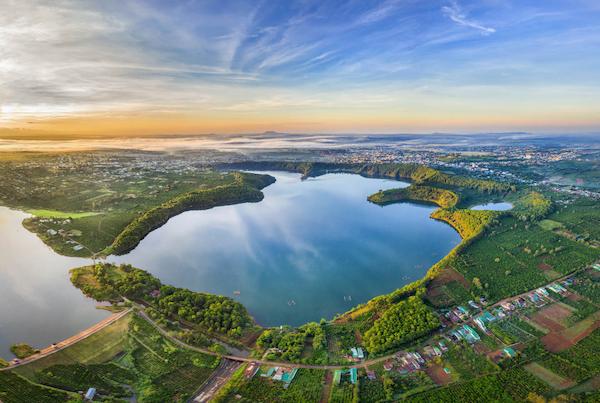
11km outside of Pleiku is Ham Rong (Dragon’s Jaw Mountain). 1,000m above sea level, this extinct volcano is ideal for trekkers and photo buffs alike. Covered in forest green and often cloaked in clouds, the winding path leading to the top is heralded by wild sunflowers in their yellow splendor. Exquisite, panoramic views await you at the peak as you view the sprawling coffee, rubber and tea plantations below. Ham Rong offers a romantic visage with an equally romantic backstory.
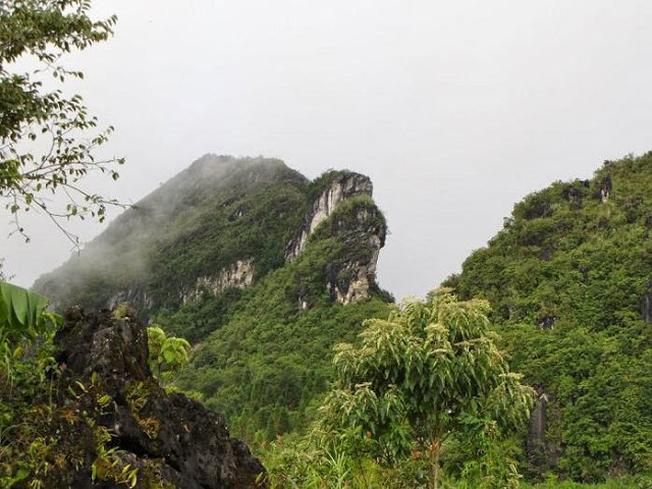
The Dong Xanh Cultural Village (in the An Phu commune) is only 10km from Pleiku. Built amid sprawling rice fields, the village consolidates all the cultural extravagance of the province. Rong Houses, tomb houses, sculptures, lotus lakes, gardens and fountains. Festivals and celebrations with music and dance are common place, with gongs and the T’rung instrument always on display (T’rung is an instrument of varying sized bamboo tubes, with the gongs they provide the spiritual soundtrack of the Central Highlands). As you enter the village, you’ll be greeted by two stone elephants. While you’re there you can admire Vietnam’s oldest fossilized tree (over one-million years old), cross arched stone bridges and gaze in awe at the giant bamboo water-wheels.
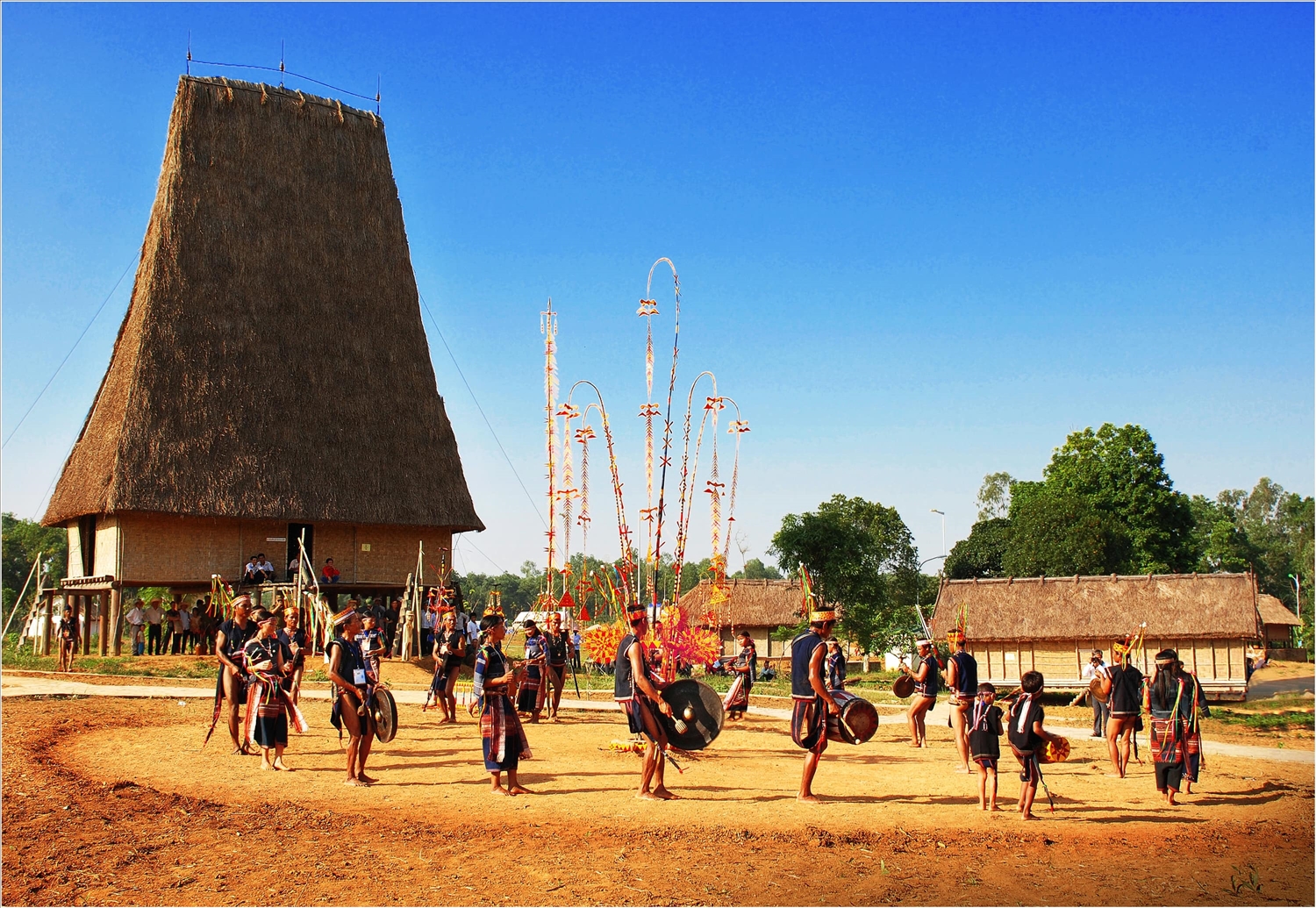
Minh Thanh pagoda (located in Pleiku) is not “old” as far as pagoda’s go (built in 1964) but its architecture is quite unique. Just outside the city center, on rolling hills, this place of worship is instantly recognizable by its 72m high, gold painted tower. The ceiling of the main hall is made of po mu wood from the highland forests, while the massive wooden doors of the pagoda present carved reliefs of six Bodhisattvas. There’s a bell tower, altars, a 4-ton incense pit, a large lotus pond and over 3,000 statues. Minh Thanh pagoda offers spiritual serenity in the midst of a bustling city.
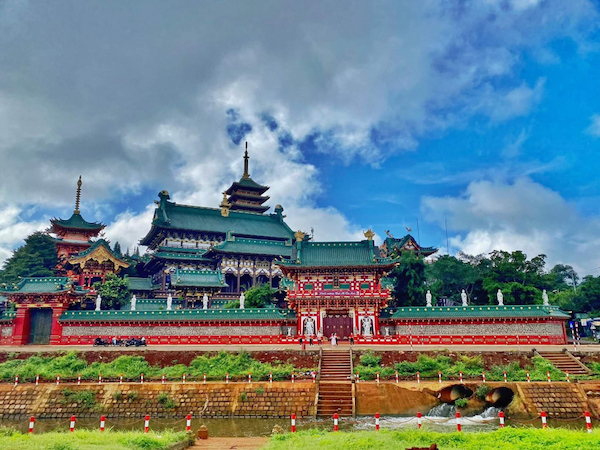
Kon Ka Kinh National Park is located in the Mang Yang District (50km from Pleiku). Named an ASEAN Heritage Park in 2003, this sprawling (42,000 hectares) natural wonderland offers an abundance of biodiversity: rivers, streams and waterfalls, over 500 flora species and 400+ animal species. While the park’s Ba River valley sits a modest 570m above sea level, the Kon Ka Kinh peak rises to nearly 2,000 meters. Kon Ka Kinh is a trekker’s delight and a photographer’s dreamscape.
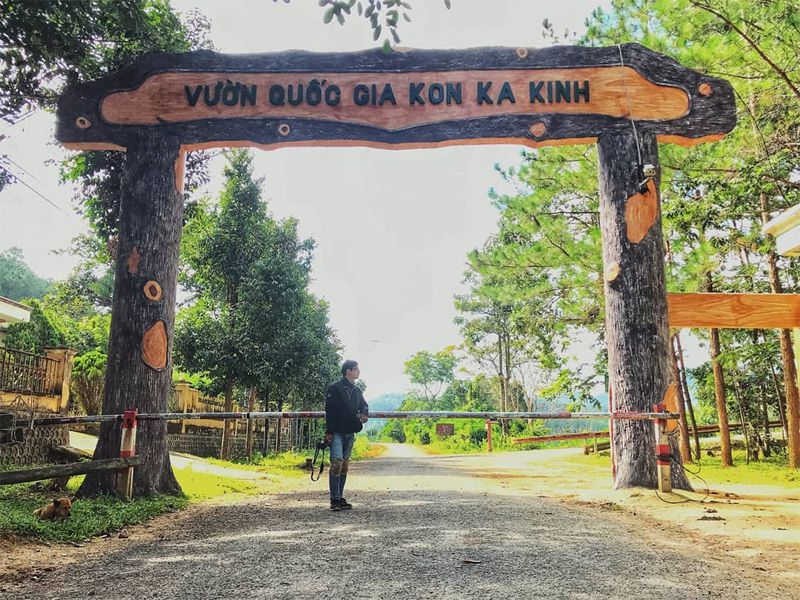
Phu Cuong Waterfall is only 45km from Pleiku. Flowing over lava rocks from an eon’s old volcanic eruption, the falls drop from a height of 45m. The foot of the falls is accessible via a narrow bridge and staircase. The vegetation is a mix of ancient trees, moss, ferns and flowers. As you ascend, you’ll find grassy hills and plants with leaves resembling giant wingspans. There’s a prehistoric vibe that permeates. The path leads to a cave behind the falls where hikers can hunker down and chill while watching the cascades.
A bit further afield is K50 Waterfall (also called Hang En Waterfall). It’s about 150km from Pleiku (buses run regularly or you can take a motorbike or taxi). Located in the Kon Chu Rang Nature Reserve and surrounded by dense jungle and steep mountainous slopes, this 54m high fall is accessible via a stone staircase which eventually turns into a dirt path. If you’re so inclined, you can use rope ladders to descend closer to the bottom of the falls. From there you can then hook up with further trails. For dedicated trekkers, K50 Waterfall is an astonishing nature experience.
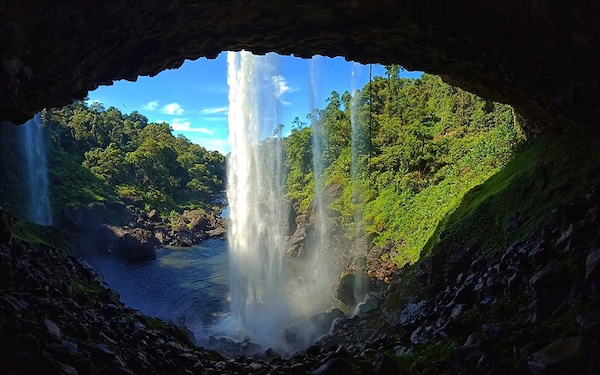
Covering a total area of about 15,495 sq km (5,983 sq mi), Gia Lai is the second largest province in Vietnam. Positioned in the heart of the Central Highlands Region, it’s is renowned for its majestic beauty and wild landscapes that have become irresistible to adventure travelers.
Famous for its capital, Pleiku, travelers in the Gia Lai will have the chance to explore the local history, agriculture, and ethnic culture as they journey through the province.
Gia Lai is a unique province due to its large size. With so much to explore, surprisingly, not much has been developed. Instead, a majority of the natural landscapes have been left untouched and are only frequented by locals. Most cities and towns in the province are quite isolated from the rest of the country, however, Gia Lai does have one major city – Pleiku.
T’Nung Lake (aka Ocean Lake) has been immortalized in many romantic songs and poets, compares the fabulous lake to the eyes of a beautiful young woman. The lake is massive and occupies the crater of a long extinct volcano. T’Nung Lake is also called a "bottomless lake" due to the difficulty in determining the depth of the lake. Pine trees line the path to the lake, forests and flowers surround it. Butterflies, bees and birds—an abundance of fish and shrimp. You can traverse the lake in dugout canoes.

11km outside of Pleiku is Ham Rong (Dragon’s Jaw Mountain). 1,000m above sea level, this extinct volcano is ideal for trekkers and photo buffs alike. Covered in forest green and often cloaked in clouds, the winding path leading to the top is heralded by wild sunflowers in their yellow splendor. Exquisite, panoramic views await you at the peak as you view the sprawling coffee, rubber and tea plantations below. Ham Rong offers a romantic visage with an equally romantic backstory.

The Dong Xanh Cultural Village (in the An Phu commune) is only 10km from Pleiku. Built amid sprawling rice fields, the village consolidates all the cultural extravagance of the province. Rong Houses, tomb houses, sculptures, lotus lakes, gardens and fountains. Festivals and celebrations with music and dance are common place, with gongs and the T’rung instrument always on display (T’rung is an instrument of varying sized bamboo tubes, with the gongs they provide the spiritual soundtrack of the Central Highlands). As you enter the village, you’ll be greeted by two stone elephants. While you’re there you can admire Vietnam’s oldest fossilized tree (over one-million years old), cross arched stone bridges and gaze in awe at the giant bamboo water-wheels.

Minh Thanh pagoda (located in Pleiku) is not “old” as far as pagoda’s go (built in 1964) but its architecture is quite unique. Just outside the city center, on rolling hills, this place of worship is instantly recognizable by its 72m high, gold painted tower. The ceiling of the main hall is made of po mu wood from the highland forests, while the massive wooden doors of the pagoda present carved reliefs of six Bodhisattvas. There’s a bell tower, altars, a 4-ton incense pit, a large lotus pond and over 3,000 statues. Minh Thanh pagoda offers spiritual serenity in the midst of a bustling city.

Kon Ka Kinh National Park is located in the Mang Yang District (50km from Pleiku). Named an ASEAN Heritage Park in 2003, this sprawling (42,000 hectares) natural wonderland offers an abundance of biodiversity: rivers, streams and waterfalls, over 500 flora species and 400+ animal species. While the park’s Ba River valley sits a modest 570m above sea level, the Kon Ka Kinh peak rises to nearly 2,000 meters. Kon Ka Kinh is a trekker’s delight and a photographer’s dreamscape.

Phu Cuong Waterfall is only 45km from Pleiku. Flowing over lava rocks from an eon’s old volcanic eruption, the falls drop from a height of 45m. The foot of the falls is accessible via a narrow bridge and staircase. The vegetation is a mix of ancient trees, moss, ferns and flowers. As you ascend, you’ll find grassy hills and plants with leaves resembling giant wingspans. There’s a prehistoric vibe that permeates. The path leads to a cave behind the falls where hikers can hunker down and chill while watching the cascades.
A bit further afield is K50 Waterfall (also called Hang En Waterfall). It’s about 150km from Pleiku (buses run regularly or you can take a motorbike or taxi). Located in the Kon Chu Rang Nature Reserve and surrounded by dense jungle and steep mountainous slopes, this 54m high fall is accessible via a stone staircase which eventually turns into a dirt path. If you’re so inclined, you can use rope ladders to descend closer to the bottom of the falls. From there you can then hook up with further trails. For dedicated trekkers, K50 Waterfall is an astonishing nature experience.

Vietnam Search Co.,Ltd
Head Office: SGCC Tower, 778 Xo Viet Nghe Tinh St, 25 Ward, Binh Thanh Dist, HCM City, Vietnam
Tel: + 84 947 170 170 ( Zalo/ WhatsApp/ Viber )
Email: contact@vietnamsearch.com
Places to go
Restaurant
Hotel
Transport
Local Products
Local Products
All